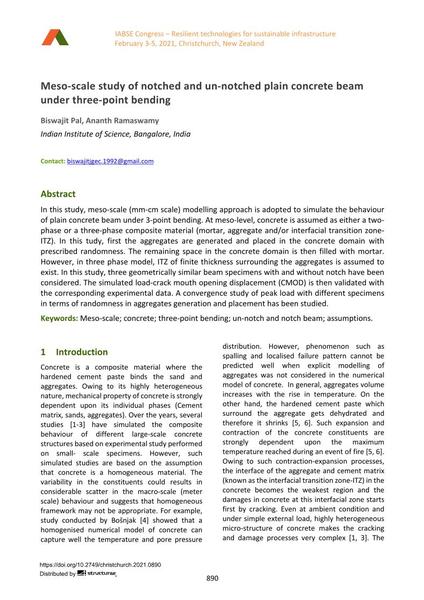Meso-scale study of notched and un-notched plain concrete beam under three-point bending

|
|
|||||||||||
Bibliographic Details
| Author(s): |
Biswajit Pal
(Indian Institute of Science, Bangalore, India)
Ananth Ramaswamy (Indian Institute of Science, Bangalore, India) |
||||
|---|---|---|---|---|---|
| Medium: | conference paper | ||||
| Language(s): | English | ||||
| Conference: | IABSE Congress: Resilient technologies for sustainable infrastructure, Christchurch, New Zealand, 3-5 February 2021 | ||||
| Published in: | IABSE Congress Christchurch 2020 | ||||
|
|||||
| Page(s): | 890-897 | ||||
| Total no. of pages: | 8 | ||||
| DOI: | 10.2749/christchurch.2021.0890 | ||||
| Abstract: |
In this study, meso-scale (mm-cm scale) modelling approach is adopted to simulate the behaviour of plain concrete beam under 3-point bending. At meso-level, concrete is assumed as either a two- phase or a three-phase composite material (mortar, aggregate and/or interfacial transition zone- ITZ). In this tudy, first the aggregates are generated and placed in the concrete domain with prescribed randomness. The remaining space in the concrete domain is then filled with mortar. However, in three phase model, ITZ of finite thickness surrounding the aggregates is assumed to exist. In this study, three geometrically similar beam specimens with and without notch have been considered. The simulated load-crack mouth opening displacement (CMOD) is then validated with the corresponding experimental data. A convergence study of peak load with different specimens in terms of randomness in aggregates generation and placement has been studied. |
||||
| Keywords: |
concrete meso-scale three-point bending un-notch and notch beam assumptions
|
||||
